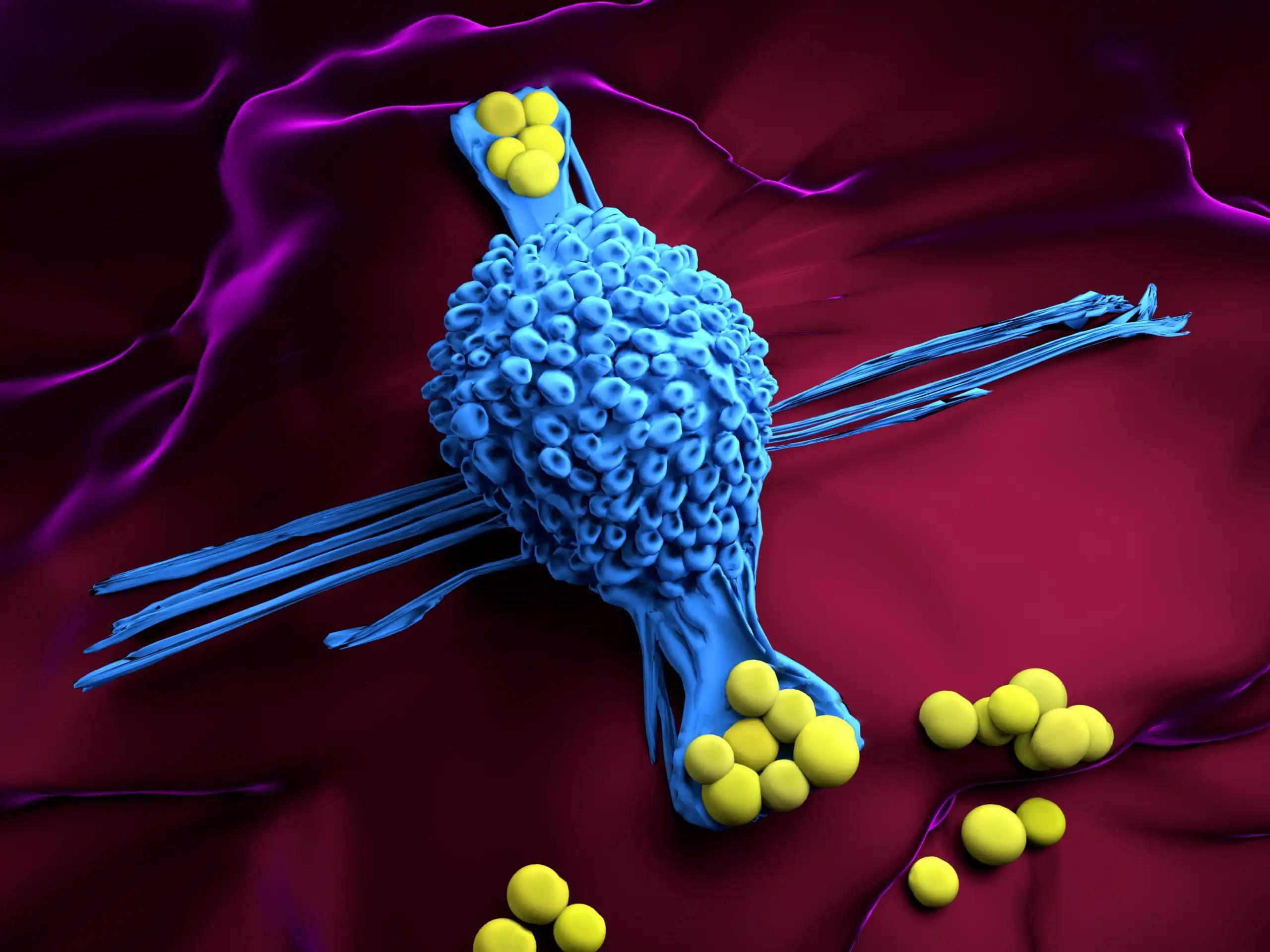KEY TAKEAWAYS
- The study aimed to investigate TLS density and distribution in different regions of NSCLC.
- Researchers found that higher E-TLS density in the IM region predicts poorer NSCLC outcomes, likely due to TLS maturation inhibition by suppressive cells.
Tertiary lymphoid structures (TLS), which are organized clusters of tumor-infiltrating immune cells within the tumor immune microenvironment (TIME), are crucial for the development and anti-tumor immunity in various cancers, such as liver, colon, and gastric cancers.
Although previous research has shown TLS presence in intra-tumoral (IT), invasive margin (IM), and peri-tumoral (PT) regions at different maturity stages, the density of TLS in different regions of non-small cell lung cancer (NSCLC) has not been thoroughly explored.
Shuyue Xin and the team sought to evaluate TLS density across these NSCLC regions and examine its association with patient prognosis.
They performed an inclusive analysis of 82 patients with NSCLC, assessing TLS and tumor-infiltrating immune cells using immunohistochemistry (IHC) staining. Tumor samples were divided into 3 subregions: IT, IM, and PT. TLS were classified as early/primary TLS (E-TLS) or secondary/follicular TLS (F-TLS).
The distribution of TLS in different maturity statuses was evaluated, along with their correlation with clinicopathological characteristics and prognostic value. Nomograms were used to predict the probability of 1-, 3-, and 5-year overall survival (OS) in patients with NSCLC.
Regarding the density of TLS and the proportion of F-TLS, the IT region exhibited significantly higher values (90.2%, 0.45/mm², and 61.0%, respectively) compared to the IM region (72.0%, 0.18/mm², and 39.0%, respectively) and the PT region (67.1%, 0.16/mm², and 40.2%, respectively).
A lower density of TLS, particularly E-TLS, in the IM region, was associated with a better prognosis in patients with NSCLC. CD20+ B cells, CD3+ T cells, CD8+cytotoxic T cells, and CD68+ macrophages were significantly overexpressed in the IM region.
There was a significant correlation between CD20+ B cells and CD3+ T cells in the IM region with the density of E-TLS, while no statistically significant correlation was observed with F-TLS. The E-TLS density in the IM region and the TNM stage were identified as independent prognostic factors for patients with NSCLC. Additionally, the nomogram demonstrated good prognostic ability.
The study concluded that a higher density of E-TLS in the IM region correlates with worse prognosis in patients with NSCLC, potentially due to the inhibition of TLS maturation caused by the increased density of suppressive immune cells at the tumor invasion front.
This study was funded by the United Fund of the Second Hospital of Dalian Medical University and Dalian Institute of Chemical Physics, Chinese Academy of Sciences (UF-ZD-202011), and Project of Science and Technology of Liaoning Province (2023-MS-272).
Source: https://pubmed.ncbi.nlm.nih.gov/39192984/
Xin S, Wen S, He P, et al. (2024). “Density of tertiary lymphoid structures and their correlation with prognosis in non-small cell lung cancer.” Front Immunol. 2024;15:1423775. Published 2024 Aug 13. doi:10.3389/fimmu.2024.1423775



